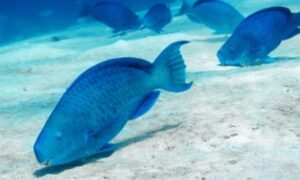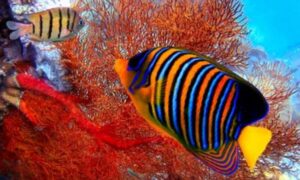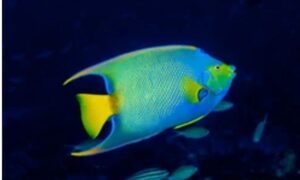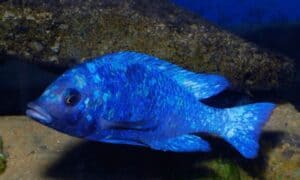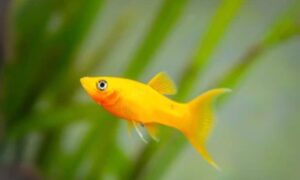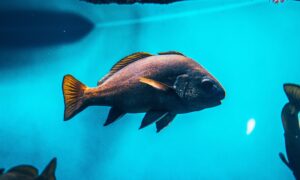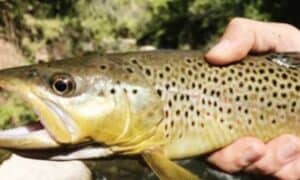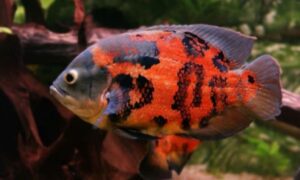Borbonius Anthias, which is also known as the Blotched Anthias, are very active fish, and they need plenty of space they can’t be kept with other species of anemonefish, or else they will get stressed out or they might even fight with each other until one of them die.
The Borbonius Anthias need tiny live foods to feed on and they will be truculent towards tank mates who are large due to their territorial habits. On the other hand, if they are provided with enough space to spread out in the aquarium and they are fed well, then the Borbonius Anthias can make a mesmerizing addition to your home aquarium and they will be able to live up to 30 years if you take proper care of them.
Borbonius Anthias or Blotched Anthias also are the best addition to many aquariums. These striking fish are also meant to be a nice addition to your home tanks. If you feed them properly and they stay happy, then they will become very good pets. Borbonius blotched anthias basically have a life span of up to 10 years but, in captivity, some of them have lived as long as 15 years.
Contents
Overview of Borbonius Anthias (Blotched Anthias)
Blotched anthias which are also known as borbonius anthias have pretty markings that make a vibrant spectacle in an aquarium. They are very calm and active fish, but something you must know is that they are prone to disease if you don’t take care of them properly. You should know how to raise borbonius anthias as it is important if you want them as your pet in your marine tank.
So if you want these fish to be healthy and happy, you should understand their specific needs and requirements which are important.
The male of both of the species can be either black or even blue with different colored stripes on their bodies, while female species are basically solid black or brown, which depends on which subspecies they are belonging to. They grow from 3 – 4 inches in length, so they are best partners for other small reef-safe fish like fairy wrasses or even pajama cardinals.
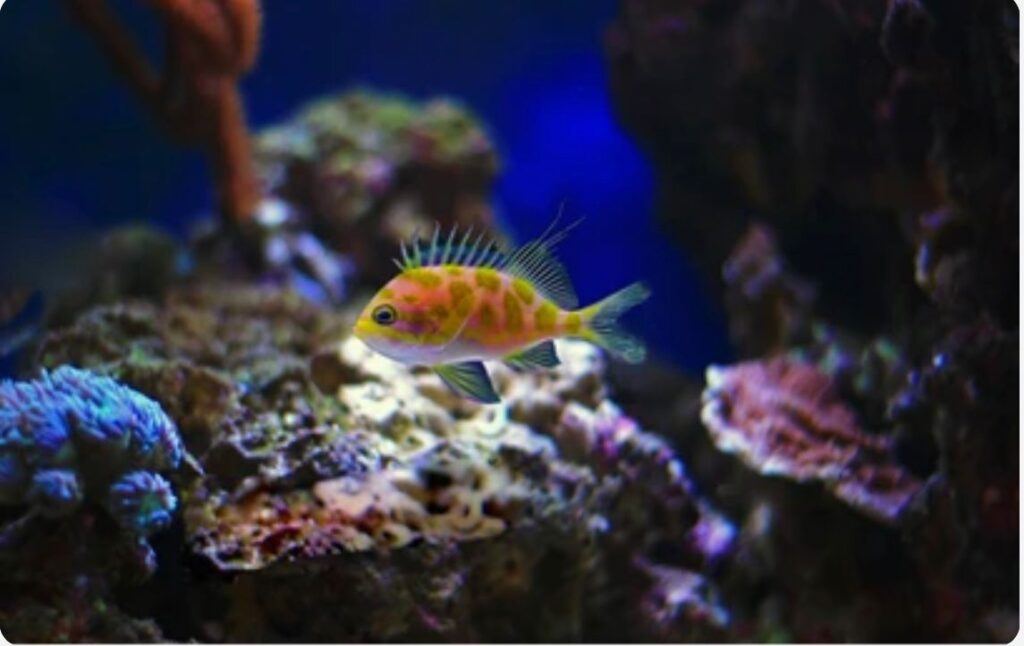
Origin and Description
The Borbonius anthias is actually a species of marine fish from the family Serranidae, which are coming from the Fiji Islands country from Melanesia in the South Pacific Ocean, which is about 1,100 nautical miles northeast of New Zealand’s North Island.
The islands are too volcanic natively and they are actually high islands having steep coral atolls. Most of these are uninhabited as they save for small resort villages. Their length is up to 18 cm. It was named after Prince Charles of Bourbon, and he was able to collect it in Tahiti during Cook’s second voyage then he decided to donate it to Leiden University in the year 1774.
This fish which is also known as Blotched Anthias can be found at depths between the range 0 m and 5 m, inhabiting coral reefs at the very outer edges or either too shallow lagoons. Juveniles are usually found under rock ledges, inside caves and crevices, or even among the rubble. They usually grow huge when they move into open areas which has sand patches.
They like to live in small groups which consist of two to four individuals. Sometimes you can even see one juvenile living with an adult pair or even with many other juveniles.
Borbonius Blotched Anthias Species Profile
Borbonius blotched anthias species looks like bright-colored fish which is named after their resemblance to beautiful tropical birds. Their size ranges between 6 to 9 inches and they are able to live up to 7 years in captivity. Borbonius blotched anthias are basically calm in nature and also peaceful, which makes them the best options for both new aquarists and also experienced aquarists.
Similarly to many other marine species, borbonius blotched anthias should be kept with a minimum number of 3 fish, but also they prefer groups of 10 or more of their similar kind specie. Additionally, to be schooling fish, they also need a huge stretch of large open swimming space, also they like to have many hiding places among rockwork. If you are looking for an aquarium that is going to feature some bold beautiful colors without being too challenging based on your time and effort, then borbonius anthias maybe just something you would love to have!
The blotched anthias are basically known as a member of one group of fish which is usually referred to as anthias. These are actually groups of fish on which the scientists don’t really agree on their taxonomy.
Some of them think of them as Groupers, Anthiines, etc and some actually think of them from their own genus. The blotched anthia can usually be found in all tropical oceans even if they are part of the Indo-Pacific Ocean and Western Pacific Ocean. It can be usually seen from waters that have ranged from 1 meter deep up to 100 meters in depth.
They like to stay closer to rocky areas but will also travel into reef flats. They basically have a dark brown color with normally five rows of orange spots with their flanks going along by two blue stripes which run horizontally over their body starting from the back of each eye and they end just before the tail fin. borbonius anthias are also good pets and they may be just what you want for your tank!

Habitat
Borbonius blotched anthias are usually found in bouldered areas of both reef and sand bottom areas where they like to form large groups. They basically inhabit shallow waters of 12 feet or less but sometimes they can also be found as deep as 120 feet. In captivity, they are really social and like to swim around, therefore it is crucial that you must provide them with a herd of fish when you are going to keep them in an aquarium.
Some specimens will not be able to do well until and unless you can give them enough hiding areas for each of them. If you are going to have only one specimen and don’t have many crevices for them to hide easily in, then they will become too stressed out and would end up dying over time. So it is advised that if you are housing only one specimen, then you should add several fake rocks so they have many places to hide from their other tank partners.
Borbonius blotched anthias usually can grow up to 6 inches but if you take proper care of them then, they can even grow up to 10 inches. This fish is for those people who have major experience in keeping marine fish.
Borbonius Anthias Tank Size and Tank Setup
Their tank should be at least 75 gallons or even larger. There is no need for you to have more than one fish per tank. Borbonius blotched anthias are very calm fish and they are not territorial, so they are able to live with most other same-sized fish, but something you must keep in mind is that these are basically real slow-moving fish, and are also smaller, and thus fast moving tank partners might be scary for them or they may chase them away if they are not really used to being around fast swimmer fishes.
Similarly like most saltwater fish, borbonius blotched anthias do well in large tanks that are similar to their natural habitat. Because these fish are really active swimmers, you must have a tank that is able to hold a lot of water and it should have plenty of room for swimming. A 120-gallon aquarium is the best in this situation, but a 75-gallon will also work really well. You must have lots of rockwork and plenty of caves so your borbonius blotched anthias can rest and sleep peacefully at night.
You must have an efficient protein skimmer and also the best filtration system when these fish grow bigger, you will be likely to need a sump. Your lighting must be on for almost 10 hours per day in order to provide them with enough light for their good coloration. Additionally, to live coral, and you should keep some marine algae so they will have something to graze on from time to time.
Feed them twice daily with a varied diet consisting of flake food, pellets, and frozen foods which will be good in protein. You must Keep in mind that as juveniles, they eat dissimilar foods than adults so you should start out offering frozen brine shrimp when it comes to the time of feeding baby anthias as it will give them enough protein. You should give your fish about a range of 150- 200 gallons per inch of adult length for best growth.
Borbonius Anthias Tank Mates
It is ideal to keep only one Blotched Anthias in a tank, with other types of blennies or similar tiny fish. Tiny, active fish will fit in very well with a Borbonius Blotched Anthias because they can feed off of its leftovers and can also be chased around by them. Anything bigger in size than a Blotched Anthias will eventually eat it because it is not very fast enough to get away from predators as it is a slow and calm fish.
Some aquarists suggest keeping more than one if you basically have a huge aquarium and are you like to separate any unwanted combinations every time. But you must remember that having two also means that there are twice as many algae for both fish to chumble on, so basically if your aquarium is kept upright and clean, then you must be able to keep two in an appropriate size tank.
Some good tank partners are Ornate Blenny, Clark’s Clownfish, etc You can also keep them with other tiny fish that stay on top or close to rockwork if they are fed well so they will not be too truculent about snatching food from their neighbor. Also On top of being chased by bigger fish, blennies also have a tendency to be nipped at by more truculent fish because they basically have long thin fins and slim bodies.
Borbonius Anthias Breeding
You will like to bring a male and female specie into your tank together. When it’s time for spawning, maybe they will start chasing each other around; you shouldn’t be alarmed by it. They will gradually choose a spot in your tank and are going to spawn there several times. When she is going to lay her eggs, then remove her from the tank for at least two days so that she doesn’t eat them.
When she will return, you can now remove all of them except for maybe one or even two of each color if you actually have multiple spawns going on at the same time. It is because not each of them is fertile, so letting some of them go to make sure you get much healthy fish as possible. You shouldn’t do anything more than scoop out extra food when you see these little cute species eating; these are not very picky eaters which is a good thing for you!
Once the eggs are hatched, then you should feed them with Artemia nauplii until they are huge enough to accept brine shrimp nauplii and crushed flake food so they stay healthy.
Are they aggressive or peaceful fish?
Borbonius Blotched Anthias is a very calm and affectionate fish. It is ideal to keep them in try groups of three or more, and they do not fare well when they are lonely. When you are going to remove them from their natural habitat, they can become very apprehensive and can start bitting you if you try to feed them from your hand. You must keep an eye on them when you are near or if you’re holding their food, also don’t forget to wear gloves so your hands are safe.
Borbonius Anthias Care
Borbonius Blotched anthias can be an exigent fish to keep alive, but if you are going to provide it with enough food and with suitable tank partners, then they can also be a great addition to your marine tank. If you will feed small crustaceans and krill then these fish will stay healthy. In a huge tank, you can even house several borbonius Blotched Anthias together, but when you have smaller tanks, then they are more difficult to keep.
Also, you should Remember that individual behavior patterns may actually vary; for instance, some borbonius blotched anthias like to live in reef aquariums while others do best in an open-top setup. If it is possible, avoid keeping them in tanks that have belligerent cichlids or other territorial fish species; borbonius blotched anthias should instead be housed with non-pugnacious species like tangs or even damsels.
Borbonius Anthias Diet
Similarly, Like other anthias, borbonius blotched anthias will like to eat nearly anything, but they also like to eat shrimp and worms. To keep your borbonius blotched anthias in a good condition and happy, you should feed them with either good flake food or frozen live brine shrimp which are high in protein. If you are feeding them frozen brine shrimp, then you must try to buy a size that closely matches what your fish is actually feeding on in nature.
In this situation, they will not grow too fast and they won’t suffer from swim bladder issues. Using a siphon is also key if you are just going to pour water into their tank, some of those brine shrimp will not be able to get into their mouth. Feeding them three times per day is more than enough; but if you like to follow an exact schedule, then you should do so at least 8 hours apart for every meal.
Water parameters for Borbonius Blotched Anthias
Borbonius blotched anthias live in water which is ranging from a pH of 8.0 – 8.4, a particular gravity of 1.020 – 1.025, and temperatures which is 76 degrees Fahrenheit or even higher. You must test your tank water if you are not sure of these numbers, as they can vary which depends on your setup and tank environment.
Borbonius blotched anthias like alkaline conditions with a hard surface such as calcium carbonate sand, best-bleached white for added contrast and a nice look. This fish is very tactful to change conditions; all levels must be maintained at all times for extended periods before you make any changes. Temperature fluctuations are mainly damaging since warm waters speed up their metabolism but it results in slower growth due to cold waters both results will cause them to die quickly!

Parasites and Diseases
Diseases and parasites are very frequent in aquariums, mainly in areas with poor water quality. But most of these diseases can be treated if caught early. You must Clean up your tank, and should remove dead fish as soon as possible you should make sure your water is safe and healthy for your fish.
Diseases can even be contracted by humans as well as fish so you must not touch any sick animals or their dead bodies! The use of quarantine tanks is best for all your new additions to an aquarium because it will give you time to figure out what is wrong and you will be able to start treatment before your other fish also get sick.
It is also the best idea to have a spare tank set up that you are able to use for quarantining your new fish before adding them into your main tanks with other fish.
Predators
The biggest threat to Borbonius blotched anthias is those other fish that eat tiny fish. Even larger fish that only eat meat, such as clownfish and yellowtail may cause a problem, mainly if they like to eat eggs.
If you have other types of fishes in your tank that feeds on eggs, then you must either purchase some plastic plants or shift your egg-laying fish to a different tank so their eggs can hatch harmlessly. Additionally, you must keep an eye out for those shrimps that might attack tiny fish; sadly, most algae-eating shrimp will also like to eat baby fish too. Tiny blennies can also be a sign of danger to young anthias because of their unquenchable appetites.
Do Borbonius Blotched Anthias make good pets?
Borbonius Blotched Anthias, also known as blotched anthias, is an excellent saltwater fish pet. You can also keep them in a group tank as long as they are not living with fish that are too large or pugnacious. sometimes they are going to bite invertebrates and other tank mates that don’t look too healthy, so it is crucial to keep them with calm tank mates and provide plenty of hiding spots for tiny invertebrates such as rock scallops, calcareous sponges, ascidians, tunicates, etc
Conclusion
The Borbonius Anthias, also known as the Blotched Anthias, is a beautiful and vibrant species of marine fish that requires specific care in order to thrive in an aquarium environment. They need plenty of space, cannot be kept with other species of anemonefish, and require tiny live foods to feed on. However, if they are provided with enough space and proper care, they can live up to 30 years.
These fish are calm, active, and peaceful, making them a great addition to any marine tank. It is important to understand their specific needs and requirements to ensure their health and happiness. The Borbonius Anthias are native to the Fiji Islands and are found in bouldered areas of both reef and sand bottom areas where they like to form large groups.
To read more about Saltwater fish, Freshwater fish, or how to care for and breed your fish do visit our site fishcaringnow.com


